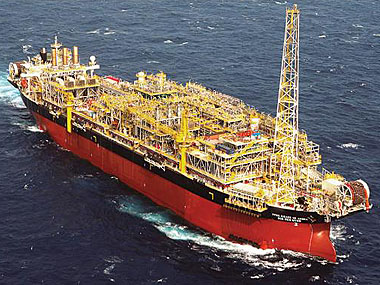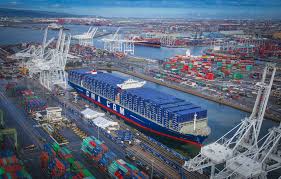| Equity injection style | Up-front; or
Pari-passu with debt; or Back-ended, subject to full acceleration rights and bank guarantees in the amount of the equity cheque to be provided. |
| Availability period | Construction period + a few months |
| Term of the Facility | Dependent upon project. Usually ~75% of the offtake contract, leaving an ungeared tail. |
| Repayment profile | Capital & interest grace period during construction.
Capital fully amortises over the repayment period. Capital & interest payments three- or six-monthly in arrears Capital may be repaid by o Equal principal repayment; o Mortgage-style redemption; or o Sculpted to fit revenue profile, subject to achieving the minimum base case DSCR.
|
| Covenants | Debt:Equity, ADSCR, LLCR and PLCR may be used as covenants affecting lock up of distributions to shareholders, or leading to default.
The level of the lockup and default covenants will be determined with respect to the volatility of the cash flows and market standards for similar projects. “Annual Debt Service Cover Ratio” (“ADSCR”) is the value of Cash Flow Available for Debt Service (“CFADS”) (excluding all cash and bank balances) in the applicable measurement period, divided by any debt principal and interest due in the same period. |
| CFADS of the Borrower is defined as cash generated in the period, after operating expenses and tax, but before debt service .
“Loan Life Cover Ratio” (“LLCR”) is the net present value of future CFADS (excluding cash) until the final scheduled maturity of a Facility (discounted at the weighted average of the forecast Facility interest rates projected in each period) to the total aggregate of loans outstanding under the Facility. “Project Life Cover Ratio” (“PLCR”) is the net present value of future CFADS (excluding cash) until the final scheduled maturity of a Project (discounted at the weighted average of the forecast Facility interest rates projected in each period) to the total aggregate of loans outstanding under the Facility. |
|
| Hedging Strategy | Borrower usually required to hedge a minimum of 50% of the interest rate exposure under each facility (subject to sensitivity tests). All fx risk during construction usually required to be hedged. |
| Debt Service Reserve Account | A Debt Service Reserve Account is required equivalent to the next 6 months’ scheduled interest and principal payments under the facilities and in place at Commercial Operation Date (“COD”), usually funded from debt and equity draw downs and topped up, if required, during the operations period. The DSRA is kept in reserve to provide liquidity when the Project has poor performance and is unable to fund its debt repayment (although it will already be in default when using the DSRA).
The DSRA may be funded from project cash flows rather than prior to COD. |
| Major maintenance Reserve Account (“MMRA”) | Either an adequate MMRA or acceptable guarantee may be required. The MMRA is a reserve account gradually funded over a course of several years against very large future maintenance requirements, such as refurbishment of turbines or repaving of a road. |
| Performance Bonds – EPC | Design and Construction: An Engineering, Procurement & Construction Performance Bond (acceptable to the lenders), to be put in place, to provide security for Delay- and Performance Liquidated Damages. If the EPC provider fails to meet its obligations to provide the asset (e.g. power plant) up to specification and on time, it will pay delay and / or performance liquidated damages (“LDs”) to the project. These LDs are secured by an unconditional, on-demand bank bond as well as guarantees from the parent company of the EPC contractor.
|
| Performance Bonds – O&M | Operations and Maintenance: The performance of the O&M Company to be guaranteed by either corporate or bank guarantees (acceptable to the lenders). As per EPC performance bonds, the Operator will pay pre-agreed liquidated damages to the project if it does not perform to contracted specification. These LDs are secured by an unconditional, on-demand bank bond and / or a guarantee from the Operator’s parent company.
|
Security Structure of the Facility |
Common security for project finance facilities, including:
Notarial bonds over movable assets; Mortgage bonds over immovable assets; Security cession of all debtors balances and claims which the Borrower may have against third parties, security cession of Project Accounts (other than the Distributions Account) including Debt Service Reserve Account, cash balances and investments of the Borrower; Security cession of Project Documents & related direct agreements, including the right, title and interest of the Borrower to the offtake contract – note that lenders will have the option to step into the project upon default, run the project, and then sell it in order to exit; Security cession of all guarantees (including parent company guarantees) and performance bonds; Cession over all licenses and permits; Pledge over all shares in the Borrower; and Direct agreements between the Lenders and EPC contractor, land owner, operator, offtaker, and concession giver. |
| Conditions Precedent (“CPs”) to Financial Close | A Project Finance facility will include an extremely long list of CPs, including without limitation:
Lender satisfaction to the following: The provisions of the EPC Contract, which as a minimum is usually a fixed priced turnkey contract; The provisions of the Operations & Maintenance Contract and all other sub-contracts (where applicable); That the guarantees and performance bonds provided by the EPC and O&M contractor/s are in place; The audited base case financial model to achieve the minimum base case covenants levels; Satisfactory External Legal Opinions, as required. Review of the final technical, environmental, insurance, model (including taxation) and legal due diligence (including review of external legal opinions) to the Lenders’ satisfaction; |
| Inter-creditor agreement (including voting rights) to be finalised (where applicable); and
Excon approval, if required. |
|
| Information Undertakings | The Borrower may be required to provide the Lender with various items of information, including the following:
Annual reports on the operation of the Project and, prior to the Scheduled COD, quarterly reports on the construction and equipment supply progress of the Project; Certificate of fulfilment of the Project completion tests), issued by the Lenders’ Technical Advisor (“LTA”); Prior to the commencement of each financial year, a copy of the operating Project budget for the next 12 months; Notice of any material loss or damage; Notice of any material breach, variation or termination of, or right to terminate or material dispute under any of the Project Agreements Details of material claims, litigation, arbitration or other similar proceedings commenced or threatened by a third party against the Borrower or any project party · any indemnity claim made pursuant to any of the Project Agreements. |
| Events of Default | Standard terms typical to Project Finance transactions include the following:
Any events of default under the other Project Documents (offtake contract, EPC, O&M) but usually at a lower threshold than under the relevant Project Document; Non payment; Borrower infringes Assignment or Change in Control obligations; Acts of Insolvency, also for guarantors; Any breach of a material clause in the Finance Agreement; Misrepresentation – linked to lists of [repeating] representations and undertakings which the Borrower must make; Failure to meet a Ratio test and; Changes to the EPC Guarantee and the O&M Guarantee. |
| Consequences of Event of Default | Upon an event of default, the Lender will have the right to do any of the following:
Cancel all remaining commitments; Call all amounts due and payable under the Facility and accelerate their repayment; Realise Security; Exercise any “step-in” rights that they might have, assuming control of the project; Apply the Project revenues as directed by the Lender; |
| Priority of Payments | All revenues will be applied in the following order of priority:
Operating and maintenance expenditure, and project taxes; Costs and fees under the Finance Documents; [Sometimes scheduled Capex, but usually not]; Interest of the Loan and hedging counterparties to the Term Loan; Capital in respect of the Loan and any crystalised hedge break amounts; Any amount necessary into the DSRA and MMRA to require the maintenance of the required balances; Payment of subordinated interest and principal; and The remaining amount may be transferred to shareholders. |
| Fees and margins | Dependent upon the particulars of the transaction, but including:
Upfront (arranging and underwriting) fees Commitment fees Interest, split into base rate, liquidity costs, statutory costs and credit margin |











